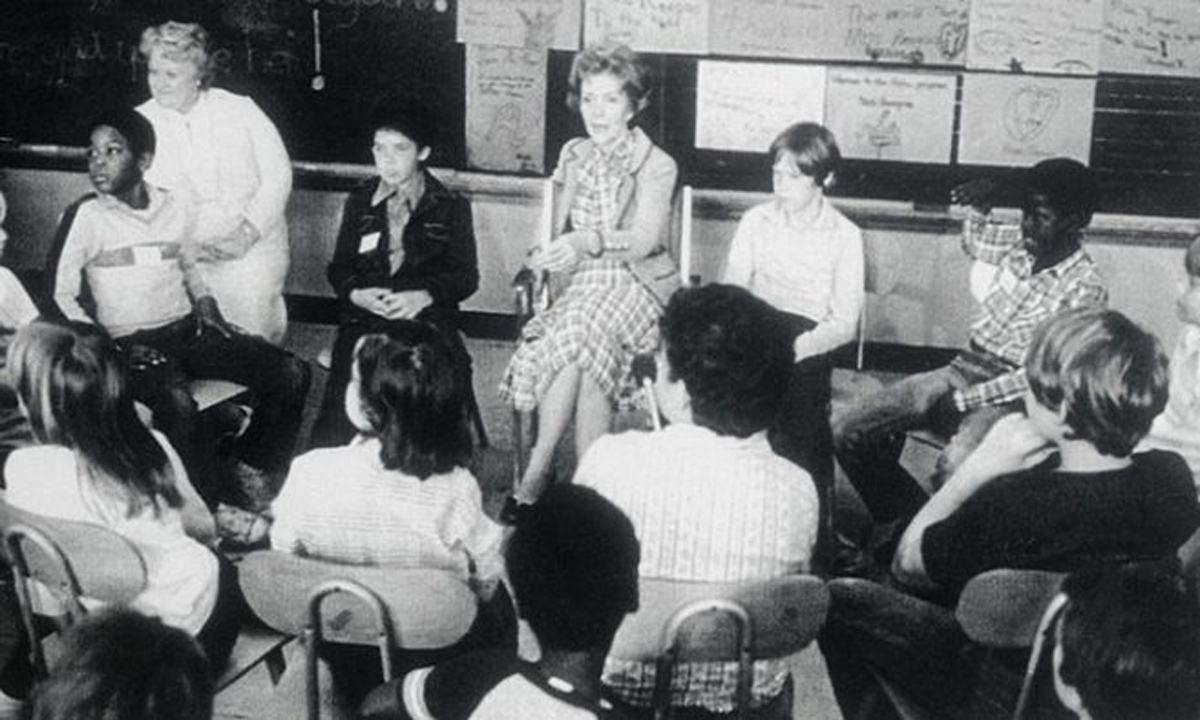Book Excerpt: 40 Years After ‘A Nation At Risk,’ Schools Are More Flush With Cash — and More Likely to Be Flushing Their Cash
Released on the 40th anniversary of the “A Nation At Risk” report, the new book Mediocrity sees 40 ways public schools are “failing today’s students.”

Get stories like these delivered straight to your inbox. Sign up for The 74 Newsletter
This is an excerpt from the new book Mediocrity: 40 Ways Government Schools are Failing Today’s Students, written by Connor Boyack and Corey DeAngelis and published by Libertas Press on the 40th anniversary of the “A Nation at Risk” report.
Do you remember being graded on a curve in school? As students, we often welcomed this approach to learning because it was much easier. We didn’t have to excel and achieve proficiency; we just needed to not do as poorly as our peers. This relative scoring measures you against others, rather than an objective standard. Let’s run with this for a moment and see how America’s schools stack up compared to other countries.
During the 1960s, scholars designed a methodology by which educational systems in different countries could be compared to one another. This ultimately led to the creation of the International Association for the Evaluation of Educational Achievement, which in 1967 conducted the first large-scale international study to assess how well students in twelve leading countries fared in mathematics.
The United States of America came in eleventh place out of twelve — Germany, France, Japan, England, and others all scored higher. As the Washington Post wrote at the time, the United
States’ “poor showing … did not surprise the experts” because “teachers here are not as well trained, and that neither American students nor the society at large places as much value on mathematics achievement as do many countries abroad.”
Of course, that has since changed. Schools have been heavily pushing STEM subjects — science, technology, engineering, and math — with “increasing attention over the past decade with calls both for greater emphasis on these fields and for improvements in the quality of curricula and instruction.” Since the absurdly-named No Child Left Behind was passed in 2001, the federal government has required regular testing in math, giving it greater attention even in elementary school. And most states require at least two years of courses just in that subject. Suffice it to say, there’s been a lot of attention on the topic throughout K-12 education. Has it been enough to pull the country’s scores out of its comparative mediocrity?
In a word, no. The international academic rankings by the Programme for International Student Assessment (PISA) evaluate 15-year-olds in 79 different countries to create a comparative score. The latest rankings place the US thirty-sixth among these countries in math with mediocre scores in the other tested subjects. This performance has remained fairly consistent since the first PISA assessment in 2000. As one education researcher noted, “What surprises me is how stable US performance is. The scores have always been mediocre.” Compared only against the United States’ largest economic competitors, the country ranks dead last.
Surely investing more resources will help, right? Wrong. As of 2018, American taxpayers were compelled to spend an average of $14,400 for every student in elementary and secondary education, an amount that is 34 percent higher than the average spent by other countries in the PISA assessment. (The amount spent on American students for higher education is $35,100 — double the average of other countries.) More money does not equate to better performance. To back up that point further, consider the recent trend of education spending in the United States alone. Since 1970, “the inflation-adjusted cost of sending a student all the way through the K-12 system has almost tripled while test scores near the end of high school remain largely unchanged. Put another way, per-pupil spending and achievement are not obviously correlated.” Indeed, while standardized test scores have remained mostly flat or have declined, spending has skyrocketed.
The money definitely isn’t going toward hiring more or better teachers. Despite the massive increase in spending on a per-student basis in recent decades, average teacher salaries have only increased by 8 percent during that entire time.11 Since 2000, there has been an approximate 8 percent increase in the number of students and teachers — but a 37 percent increase in principals and assistant principals and an 88 percent increase in administrative staff. American taxpayers now spend a sum exceeding a trillion dollars on schooling. The K-12 school system is flush with cash and flushing cash.
And the number keeps going up as education outcomes continue to go down. While $14,400 was spent on average per student in 2018, as of 2020 that amount has increased to $16,000. (Keep in mind that this is the average; in some areas, government schools spend well over $30,000 per student.) And in the wake of COVID-19 bailouts pumping nearly $200 billion into the school system, that number is likely far higher.
The school system is bloated with employed adults whose activities have little to no impact on educational outcomes of students. This problem is often made worse when considering how difficult it sometimes is to fire bad teachers. In 2015, the New York State School Boards Association reported that firing a teacher takes on average 830 days and costs $313,000 — that is students being “taught” for over two school years by an adult who shouldn’t be a teacher. In New York City proper, over the course of an entire decade, the largest school district in the country fired only a dozen teachers due to incompetence. The problems continue:
“Some teachers who can’t be fired due to the highly restrictive teacher union contracts are assigned to ‘Temporary Reassignment Centers.’ In 2009, more than 600 New York City teachers reported to the Temporary Reassignment Centers dubbed ‘Rubber Rooms.’ Important to note, these ‘teachers’ received their full salary as well as retirement contributions and accumulation of seniority.”
Here’s the takeaway: the public school system has become more of a jobs program for adults than an education initiative for children.
Get stories like these delivered straight to your inbox. Sign up for The 74 Newsletter

;)
